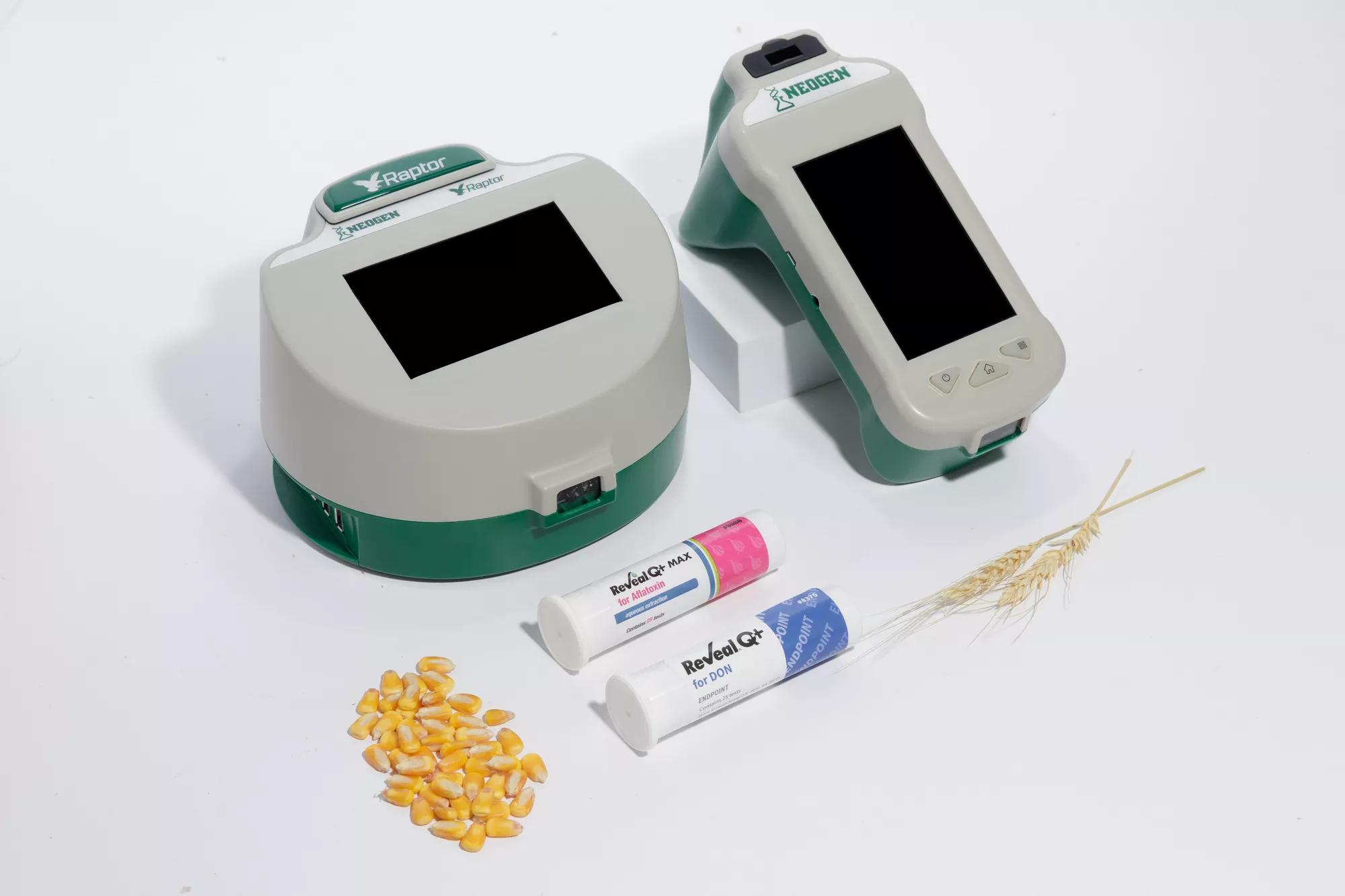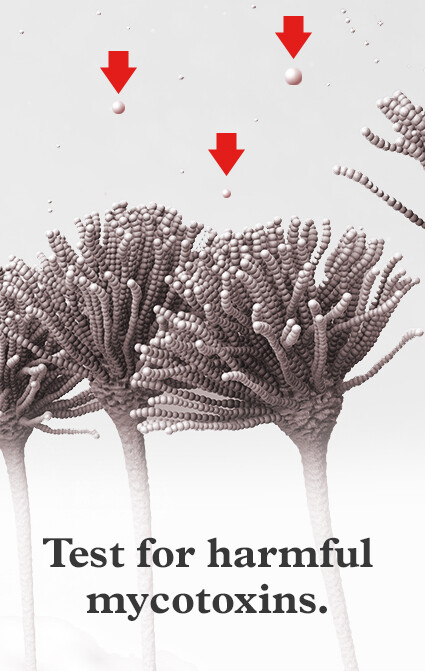Selecting the Right Mycotoxin testing Services for Your Company
Selecting the Right Mycotoxin testing Services for Your Company
Blog Article
Ensuring Conformity With Laws: the Function of Mycotoxin Checking in Top Quality Control
Making certain conformity with rigid guidelines is critical for maintaining food safety and security, and the function of mycotoxin testing in quality control can not be overemphasized. Mycotoxins, hazardous compounds generated by particular molds, pose significant health threats, making their detection vital in food production. Adherence to regulatory criteria, such as those established by the FDA and EU, needs robust testing approaches and innovations to recognize and quantify these impurities. By applying extensive testing methods, business can prevent possible health situations, prevent pricey recalls, and preserve customer trust. The complexities of these screening procedures raise crucial concerns concerning their effectiveness and effectiveness.
Recognizing Mycotoxins
Understanding mycotoxins is fundamental to making sure the high quality and safety and security of farming items. Mycotoxins are toxic secondary metabolites created by specific types of fungis, generally located in foods items such as grains, nuts, and spices. These substances can emerge at numerous phases of the food production process, from pre-harvest to storage space, and posture substantial health dangers to both pets and human beings (Mycotoxin testing Services). The most infamous mycotoxins include aflatoxins, fumonisins, trichothecenes, and ochratoxins, each connected with details fungal varieties and environmental problems.
The existence of mycotoxins in food can lead to chronic and intense health and wellness issues, including liver damages, immune reductions, and carcinogenic effects. Their discovery and quantification are essential components of top quality control in agricultural and food sectors. The complexity of mycotoxin contamination requires a multifaceted technique, utilizing innovative analytical strategies such as liquid chromatography, mass spectrometry, and enzyme-linked immunosorbent assays (ELISA) By recognizing the sources, kinds, and impacts of mycotoxins, stakeholders in the farming market can much better carry out preventative steps and mitigate dangers, making certain more secure usage for end-users. This understanding creates the bedrock whereupon effective mycotoxin monitoring techniques are built.
Regulative Requirements for Mycotoxins
Having actually developed a foundational understanding of mycotoxins and their influence on food security, it is essential to review the regulatory requirements regulating their existence in farming items. Regulative requirements for mycotoxins are crucial because they define permissible limits, ensuring food safety and safeguarding public health and wellness. Different worldwide and nationwide companies have actually established these limitations based on extensive danger assessments.
The Codex Alimentarius Commission, an international body developed by the FAO and that, supplies guidelines and maximum allowable degrees for various mycotoxins in food and feed. The Codex has actually set limits for aflatoxins in peanuts, maize, and dried out figs, among other assets. These requirements are often taken on or adapted by individual nations to fit their certain requirements.
In the European Union, Policy (EC) No 1881/2006 specifies optimum levels for numerous mycotoxins, such as aflatoxins, ochratoxin A, and deoxynivalenol, in different foodstuff. Likewise, the U.S. Food and Drug Administration (FDA) has actually established activity levels for mycotoxins like aflatoxins in assets such as grains and nuts.
Adherence to these regulative standards is critical for preserving market access, consumer trust, and public health and wellness. Non-compliance can lead to considerable financial losses and Get More Information health and wellness threats, highlighting the importance of rigid mycotoxin testing procedures.
Testing Techniques and Technologies

ELISA is commonly appreciated for its economical and fast testing abilities, making it excellent for high-throughput settings. It relies upon antibodies to find certain mycotoxins, offering results in a reasonably short time frame. However, its level of sensitivity might be limited compared to extra sophisticated strategies.
HPLC, on the other hand, stands out in providing measurable evaluation with high accuracy and accuracy. It divides complex blends into private parts, making it highly efficient for recognizing and measuring numerous mycotoxins at the same time - Mycotoxin testing Services. This strategy, while much more resource-intensive and time-consuming than ELISA, uses a greater degree of dependability

LC-MS represents the pinnacle of analytical specificity and level of sensitivity. Incorporating the splitting up power of fluid chromatography with the discovery abilities of mass spectrometry, LC-MS can find also trace degrees of mycotoxins. This technique is important for verifying the existence of mycotoxins in forensic and regulatory contexts, guaranteeing compliance with stringent safety requirements.
Implementing Checking Procedures

Incorporating these sophisticated screening approaches into an extensive quality assurance structure demands a well-structured strategy to implementing screening protocols. To accomplish this, companies have to initially conduct a complete threat analysis to recognize possible mycotoxin contamination factors within the supply chain. This analysis educates the growth of a customized screening strategy that click this attends to certain susceptabilities.
Following, developing standardized sampling treatments is critical. Regular sampling guarantees that test results are trusted and rep of the whole set (Mycotoxin testing Services). Sticking to guidelines from regulatory bodies, such as the FDA or EFSA, helps maintain conformity and improves the reputation of the screening procedure
Training personnel is another crucial part. Personnel needs to be skilled in both sample collection and the operation of screening devices. Routine training sessions and certification programs can ensure that group participants stay updated with the latest strategies and regulative modifications.
Benefits of Mycotoxin Examining
Mycotoxin screening provides numerous advantages that substantially enhance the safety and security and high quality of food and feed products. Largely, it functions as an important control step to stop infected goods from getting to the customer market, therefore guarding public health and wellness. By identifying and measuring mycotoxins such as aflatoxins, fumonisins, and ochratoxins, manufacturers can guarantee that their items meet rigid regulatory requirements, hence avoiding prospective lawful repercussions and connected costs.
Furthermore, mycotoxin screening adds to the economic stability of food and feed industries by decreasing the risk of massive item remembers. The ability to isolate and find contaminated batches early in the manufacturing process lowers waste and prevents the monetary losses connected with broken brand name credibility. It cultivates customer trust about his fund and loyalty, as customers are progressively mindful of food safety and security issues and demand higher high quality criteria.
The implementation of routine mycotoxin screening additionally advertises best techniques within farming and production industries. By sticking to rigorous testing methods, business can optimize their quality control procedures, improve functional efficiency, and make sure the regular production of risk-free, high-quality products. Finally, the advantages of mycotoxin screening are complex, adding to public health and wellness, economic security, and sector stability.
Conclusion
Mycotoxin screening is critical in making certain conformity with regulatory standards, therefore preserving food safety and quality assurance. By methodically spotting harmful mycotoxins, this technique assists reduce health risks, prevent legal repercussions, and stay clear of economic losses connected with item recalls. Implementing robust screening procedures cultivates consumer depend on and confidence in food security practices, eventually sustaining the stability and reputation of food services. Hence, mycotoxin testing stays a vital component of contemporary food safety and security administration systems.
Ensuring compliance with strict policies is critical for maintaining food safety, and the function of mycotoxin screening in quality control can not be overstated.In the world of mycotoxin screening, progressed methods and innovations are critical in making sure food safety and security and governing compliance.Mycotoxin testing offers various benefits that dramatically boost the safety and security and top quality of food and feed items.Mycotoxin screening is critical in ensuring compliance with regulatory standards, thereby maintaining food safety and security and top quality control. Hence, mycotoxin screening stays an indispensable component of modern-day food security management systems.
Report this page